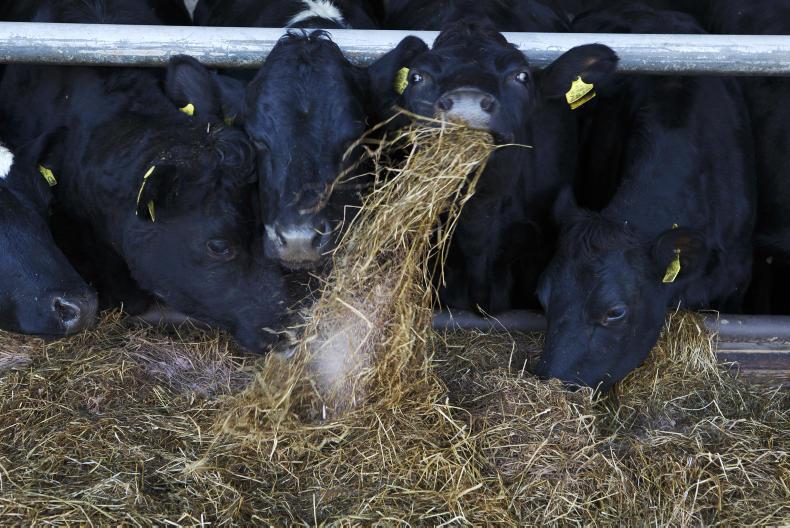Has anyone ever warned you about potassium (K) levels in grass silage for dry dairy cows?
If so, they weren’t wrong. Too much K in a dairy diet and you’re flirting with milk fever.
And it’s a double whammy: K not only ties up magnesium (Mg) in the animal’s stomach – Mg being critical for calcium metabolism and the single-most important dietary factor regarding milk fever control – but also induces a state of metabolic alkalosis, which slows calcium absorption and mobilisation. This is where our DCAD comes in.
What is DCAD?
Dietary cation-anion difference (DCAD) is the acid-base status in the bloodstream of the animal, expressed as a number (meq/100g of dietary dry matter).
It is a common measure across the Atlantic and is calculated based on a cow’s diet. Cation minerals, such as sodium and K, increase the DCAD value and anion minerals, such as chloride and sulfur, decrease it.
In the dry cow, a diet with a low (<5 meq) or slightly negative DCAD value lends itself to reduced rates of milk fever by optimising the animal’s ability to mobilise calcium.
However, in lactating cows, a positive DCAD (25 to 35 meq/100g – metabolic alkalosis) is preferable to help neutralise the extra acids in the system as a result of the increased feed intake and accelerated metabolism associated with high production levels.
Relevant to me?
What is important from an Irish point of view, provided it is the principle feedstuff offered, is the K concentration in your grass silage.
The target for dry cows on a grass silage-based diet is for silage to have a K concentration of less than 1.8%.
Unfortunately, the average Irish silage has a K concentration of 2.3%, ranging from 0.5% to a whopping 5.6%.
In the final three weeks of gestation, avoid feeding silage with a K concentrations in excess of 1.8% to dry cows if possible, or take necessary measures.
High K – what next?
So you’ve got your silage tested and K levels are high – what now? Anion salts, such as magnesium chloride and magnesium sulphate, can be sprinkled on silage in the same fashion as pre-calving minerals, and these will help negate any effects of high K levels.
Feed 100g to 150g per head and be careful to monitor intakes – these salts are often highly unpalatable.
Alternatively, where silage quality is high, include straw in the diet to dilute the K going into the animal.





SHARING OPTIONS